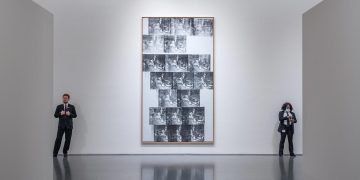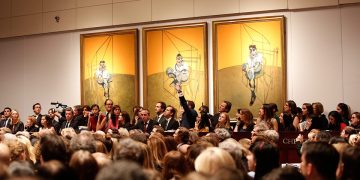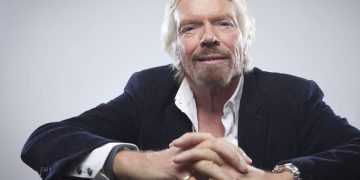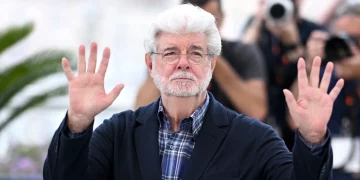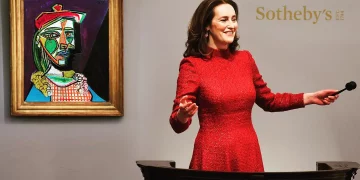In the world of rare collectibles, there are few stories as bizarre and contentious as that of a private collector who managed to acquire not just artworks or artifacts, but an entire country and its most precious national treasures. This is the story of a man who, through an ambitious and highly controversial series of acquisitions, became the de facto owner of one of the most historically significant nations in the world. Through this unprecedented geopolitical collecting power play, he acquired valuable land, iconic cultural artifacts, and priceless relics that once defined a nation’s identity.
The events that led to this extraordinary collection raise complex questions surrounding the intersection of private wealth, geopolitical influence, and the preservation of cultural patrimony. In this article, we explore how one collector managed to buy an entire country and its treasures, the global uproar that followed, and the ongoing debates surrounding the ethics of cultural ownership in the modern world.
The Origins of the Collector
The collector at the center of this astonishing story was not an ordinary art enthusiast or a simple millionaire. He was a visionary—some would say a ruthless one—who saw not only financial opportunities in acquiring rare treasures but also geopolitical influence. His rise to power and wealth began with an unconventional investment strategy that blurred the lines between commerce, diplomacy, and national heritage.
Born into a wealthy family, the collector initially focused on acquiring rare artworks, artifacts, and historical documents. His collection grew exponentially, with the help of advisors, auction houses, and private dealers, often surpassing the personal collections of national museums. Yet, for all his success in the art world, the collector harbored a much more ambitious vision: to extend his influence beyond the art market and into the very heart of cultural and geopolitical landscapes.
Through a series of high-stakes negotiations and strategic purchases, he began acquiring large tracts of land and even national assets in a foreign country that had long been destabilized by political unrest and economic downturns. The country, struggling with debt, corruption, and weak governance, found itself vulnerable to external forces—forces that included the collector’s ambition.
The Acquisition of the Country
The acquisition began through a combination of economic investment, loans, and, some would argue, manipulation of the political system. The country in question, once rich in culture and natural resources, was forced into economic distress due to political mismanagement and declining global commodity prices. The collector, leveraging his extensive network and considerable wealth, offered financial aid under the guise of investment and aid packages. However, these investments came with strings attached, which, over time, gave the collector significant leverage over the country’s decision-making processes.
At first, the collector’s involvement was minimal, and his contributions appeared to be in the form of much-needed capital injections. But as time passed, his influence grew, and the political system became increasingly reliant on his financial support. Behind the scenes, the collector began to make subtle maneuvers, securing ownership of critical assets, including valuable land, historic monuments, and cultural artifacts.
The final step came when the collector, using his influence over the political leadership, managed to broker a deal that granted him formal ownership of the country’s national treasures. These treasures included priceless artifacts from ancient civilizations, religious icons, and artworks considered integral to the nation’s identity and cultural heritage. The collector’s role as the steward of these items transformed from that of a mere buyer to that of a de facto ruler over the country’s cultural patrimony.
The National Treasures and Their Cultural Significance
The treasures that the collector acquired were not just physical objects; they were the embodiment of the country’s history, traditions, and collective identity. Among the items in his collection were ancient manuscripts, sacred religious relics, sculptures that had been preserved for centuries, and artworks created by some of the greatest masters of the region. These objects were not only valuable in terms of their artistic worth but also represented the cultural and historical consciousness of the people.
For the citizens of the country, these artifacts were more than just relics of the past—they were symbols of their heritage, their struggle for independence, and their cultural achievements. The acquisition of these treasures by a private individual raised immediate questions about the ethics of cultural ownership. Could one person, with vast financial resources, lay claim to a nation’s entire cultural identity? What did this mean for the people whose ancestors had fought to preserve these artifacts?
This was not just a financial transaction; it was an act of geopolitical significance. The cultural patrimony of an entire nation had been sold to the highest bidder, and the implications were far-reaching.
The Debate Over Cultural Patrimony
The act of one person—or one private entity—acquiring a nation’s cultural treasures has sparked fierce debates across the globe. The controversy surrounding this collector’s acquisitions brought issues of cultural patrimony to the forefront of international discussions. Cultural patrimony refers to the collection of items, artifacts, and works of art that belong to a nation and are considered integral to its cultural identity.
In the case of this collector’s acquisition, questions of ownership and ethical stewardship arose. Many argued that cultural treasures should not be subject to private ownership, especially when they represent the shared history of an entire population. Museums, historians, and nationalists alike raised concerns that such acquisitions could lead to the destruction of national identity, as priceless pieces of history were removed from the public sphere and placed into private hands.
International organizations, such as UNESCO, voiced their concern over the collector’s actions. They argued that cultural artifacts should remain within the country where they originated, ensuring that they are accessible to future generations and that they continue to serve as symbols of national pride and heritage. The collector’s growing monopoly over the country’s treasures was seen as a threat to global cultural diversity and a challenge to the ethical principles of art restitution.
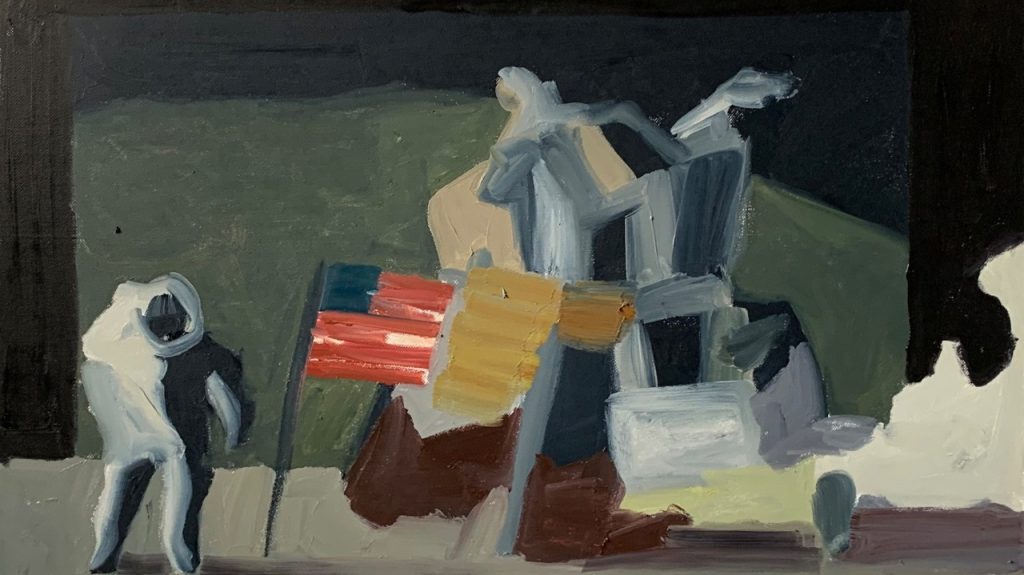
Geopolitical Implications: How Wealth Shapes National Boundaries
The implications of the collector’s actions extend far beyond the art market. By acquiring a country’s most important treasures, the collector not only secured invaluable assets but also gained significant geopolitical power. This power allowed him to influence policy decisions, negotiate trade deals, and even shape diplomatic relations between countries.
The situation raised broader questions about the intersection of private wealth and national sovereignty. What happens when an individual or corporation amasses enough wealth to exert control over a nation’s assets, including its cultural heritage? Could private collectors, with their vast resources, begin to reshape borders, influence political outcomes, and dictate the future of a country’s cultural legacy?
This question is especially pertinent in the modern era, where the flow of capital and information is increasingly globalized. Collectors can now reach across borders, acquiring not only artworks but also entire collections that once belonged to national institutions. This raises concerns about the protection of cultural heritage in an era where private interests often supersede national sovereignty.
The Ethical Dilemma of Cultural Ownership
The ethical dilemma at the heart of this collector’s acquisitions centers around the issue of cultural ownership. While private ownership of art and historical objects is a longstanding tradition, the sale of national treasures to private individuals raises important questions about the preservation of cultural identity.
For many, cultural treasures are not just material objects—they are part of the collective memory of a nation. These objects tell stories of triumph and tragedy, of cultural exchange and conflict, and of the resilience of people over time. When such objects are sold to private individuals, there is a risk that these stories could be lost, as these artifacts are removed from their original context and placed in private collections, where they may never be seen by the public again.
Furthermore, there is the issue of restitution. In the case of looted or stolen artifacts, the question of ownership becomes even more contentious. Should cultural treasures that were acquired under dubious circumstances be returned to their countries of origin? The collector’s acquisition of national treasures raises the specter of art theft and the growing market for illicit antiquities, where powerful collectors play a significant role in shaping the narrative of cultural ownership.
Conclusion: The Future of Cultural Collecting
The story of the collector who bought a country and its national treasures is a cautionary tale of the dangers of unchecked power in the world of art and culture. While the collector’s acquisitions were legally sanctioned, the ethical implications are profound and far-reaching. This unprecedented event has ignited debates about the future of cultural patrimony, the responsibilities of collectors, and the role of national institutions in preserving and protecting cultural heritage.
As private collectors continue to amass wealth and power, the question of who truly owns cultural artifacts will continue to be contested. The events surrounding this collector’s acquisitions have brought to light the complex relationship between wealth, politics, and cultural identity, and it is likely that this debate will only grow more intense as the world becomes increasingly interconnected.










